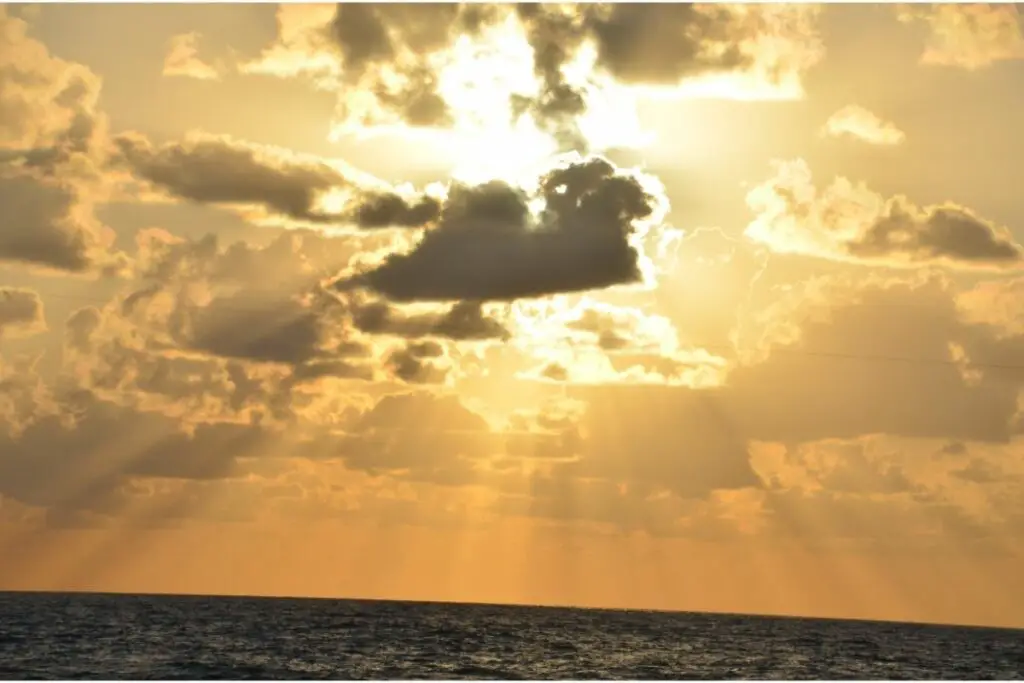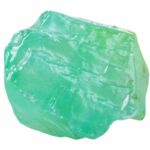Crystals are fascinating and powerful objects and more and more people are becoming aware of their abilities.
They have incredibly strong healing abilities that can turn your life around for the better.

Of course, there are different crystals with different properties and each one is used for a specific purpose.
So, based on your needs and situations, you can get yourself the right crystal.
But before you begin using crystals, you should know how to take care of them.
You need to know the dos and don’ts so that your crystals last a long time and keep giving you the benefits you seek.
One of these things that you need to take care of is sun exposure. Some crystals need to be exposed to sunlight from time to time so that they can be recharged.
And some crystals need to be kept away from the sun so that they don’t get damaged – but they can instead be charged under the moonlight.
Below, I take a look at what crystals can be in the sun and what crystals cannot go in the sun.
What Crystals Can Be In The Sun?
1) Lapis Lazuli
Does Lapis Lazuli fade in sunlight? This is a deep-blue, opaque stone that can easily withstand the sun.
Its colour won’t fade and it won’t get brittle either.
In fact, you can place it under the sunlight to recharge it from time to time.
Just make sure that you don’t overdo it because it’s better to protect your stones from prolonged UV rays, as a general rule of thumb.
2) Black Obsidian
Can Black Obsidian go in the sun? Darker coloured crystals are quite resilient against the sun.
So, a black crystal like Black Obsidian can easily handle itself against the sun’s harsh rays.
In fact, it is often naturally found outdoors. So you don’t have to worry about exposing it to the sunlight at all.
3) Black Onyx
Again, due to the deep black colour of the Black Onyx stone, it is completely safe to put under the sun.
Even for an extended period. Its colour won’t fade over time.
4) Jade
Jade’s deep green colour makes it a popular choice amongst crystal enthusiasts. And people are generally concerned about whether it can withstand sunlight or not.
Well, the thing is, if your Jade crystal is 100% natural, it can be kept under the sun. Its colour won’t fade, and it won’t get brittle.
However, if your Jade has been treated with artificial dyes, then it can become faded. So, you may decide accordingly.
5) Labradorite
Can Labradorite be in the sun?
Labradorite is one of the darker coloured stones. It has a metallic look to it, consisting of shades of green, blue and yellow.
Due to the darkness of the colours, Labradorite can easily be in the sun, even for years at a time!
6) Howlite
This beautiful stone is white in colour and has black veins running through it.
Can Howlite go in the sun? Well, due to its white (or greyish) colour, it reflects back most of the sunlight that falls on it.
So, it is completely safe to keep it under the sun for charging.
7) Moonstone
Can Moonstone be in the sun? Yes, this beautiful, translucent stone can withstand sunlight.
Due to its name, you might think that it can only be placed in the moonlight. But that’s not true.
A lot of people expose it to the sun to recharge its energies. Just make sure to protect it from the rain as that can damage this stone.
8) Carnelian
This orange coloured stone is available in translucent as well as opaque varieties, but can Carnelian be in the sun?
No matter the type, this is a perfectly safe stone to place under the sun to recharge the crystal’s energy supply.
How Long To Charge Crystals In The Sun?
If you’re charging any of the above crystals in the sun, they shouldn’t need long at all.
A few hours absorbing the sun’s rays should be enough to charge and activate your crystals.
I wouldn’t recommend leaving any crystal in the sun for too long.
What Crystals Cannot Go In The Sun?
1) Quartz Family
As a general rule, the quartz family of crystals should be kept away from the sunlight.
No matter the colour, a quartz crystal can fade over time if exposed to the sun. Some quartz crystals can even become brittle and break.
Some examples of crystals from this family that need to be protected from sunlight are:
- Rose Quartz
- Citrine
- Clear Quartz
- Smoky Quartz
- Aventurine
- Chalcedony
- Tiger’s Eye
2) Amethyst
Amethyst also belongs to the quartz family. But since it is extremely popular, I thought it would be better to mention it separately.
Does Amethyst fade in the sun? Well, you might have heard that Amethyst can be charged using sunlight and while that is technically true, it can dramatically lose its colour if you do so.
This happens due to the interaction of UV rays with iron contained within the Amethyst crystal. So it’s best to find other ways to cleanse and charge your amethyst.
3) Fluorite
Can fluorite be in the sun? Sadly, no.
This is one of the most reactive crystals under sunlight.
That’s because Fluorite is made of calcium fluoride which can quickly overheat and crack when exposed to the sun.
So to keep your fluorite in tip top condition, keep it out of the sunlight.
4) Aquamarine
Aquamarine has a pleasant blue colour which can turn into white when exposed to sunlight for a longer duration (typically more than a couple of hours).
This happens because of the way sunlight reacts with its chemical constituents like beryllium, silica, aluminium and oxygen.
5) Yellow Topaz
Topaz is an interesting crystal. It doesn’t react heavily under the sunlight but will turn into maroon or brown (from its distinct yellow colour) if you leave it in the sunlight for more than 8 hours.
So, avoid doing so even though you might not see an immediate fading of colour.
6) Selenite
Can Selenite go in the sun? Well, this crystal is another interesting one. You can leave it in the sunlight for short durations to recharge its energies. However, exposure of more than 4 hours or so will leave it looking dull and faded.
Selenite is self-cleansing so doesn’t need anything special to remove negative energies, but it can benefit from charging – just charge your selenite in the moonlight instead though.
7) Opal
Opal is a stone that immediately stands out amidst others. It has a beautiful holographic colour that will instantly capture your attention.
It is this feature that will fade away if you expose it to sunlight. It will also lose its water content.
8) Celestite
This light blue coloured crystal can turn into white if you leave it in the sunlight for too long.
This happens because the UV rays in sunlight have a bleaching effect on this crystal.
Frequently Asked Questions
Can Clear Quartz Go In The Sun?
Nope, crystals in the Quartz family are not suitable for charging in sunlight.
Can Rose Quartz Go In The Sun?
Unfortunately not. Just like Clear Quartz, Rose Quartz can’t be charged in the sunlight. Rose Quartz can quite commonly fade in sunlight.
Can Smoky Quartz Go In The Sun?
Despite being a darker Quartz, Smoky Quartz is still sensitive to sunlight and unsuitable for charging in the sun.
Can Tiger’s Eye Go In The Sun?
As Tiger’s Eye is a darker crystal, you might expect it to be okay in the sun, but, as part of the Quartz family, it actually isn’t.
Can Green Aventurine Go In The Sun?
Green Aventurine is part of the Quartz family too, so just like Clear Quartz and Rose Quartz, it can’t be charged in the sunlight.
Can Blue Calcite Be In The Sun?
I wouldn’t recommend charging Blue Calcite in sunlight as it can fade and become brittle over time.
Can Orange Calcite Be In The Sun?
Just like Blue Calcite, Orange Calcite isn’t suitable for charging in the sun as it’s likely to break and fade.
Can Jasper Be In The Sun?
It really depends on the type of Jasper.
Red Jasper can withstand charging in the sun, but shouldn’t be exposed too heavily. Unakite Jasper, however, is prone to fading.
Can Amazonite Go In The Sun?
Amazonite enjoys sunlight and can really benefit from charging in the sunlight.
Is Citrine Sun Safe?
Instinct might try to tell you that this crystal resonates with the sun and can be charged in it, but that’s not the case sadly. Citrine is not sun-safe.
Can Moss Agate Be In The Sun?
Moss Agate can go in the sun but don’t leave it exposed for too long.
Can Snowflake Obsidian Go In The Sun?
As this crystal is from the Obsidian family, it should be safe for short stints in the sun.
Can Hematite Go In The Sun?
As a solid, dark stone, Hematite should be fine for charging in the sun.
Can Malachite Go In The Sun?
Malachite should be absolutely fine if you’d like to place it in the sun for charging.
Final Thoughts
Charging your crystals under the sun can be highly beneficial, but only if they are able to withstand its UV rays.
I hope this post has helped you understand which crystals can be in the sun while providing a handy list of the crystals that can’t be in the sun.
Remember that charging your crystals in the sunlight isn’t the only option either – the moonlight provides a beautiful, and more gentle, alternative.
- Pegasus Symbolism: Understanding The Spiritual Meaning And Dream Meaning Of Pegasus - November 5, 2023
- 50 Beautiful Moonstone Affirmations To Try - November 5, 2023
- The 6 Best Samhain Crystals To Work With This Spooky Season - October 23, 2023






